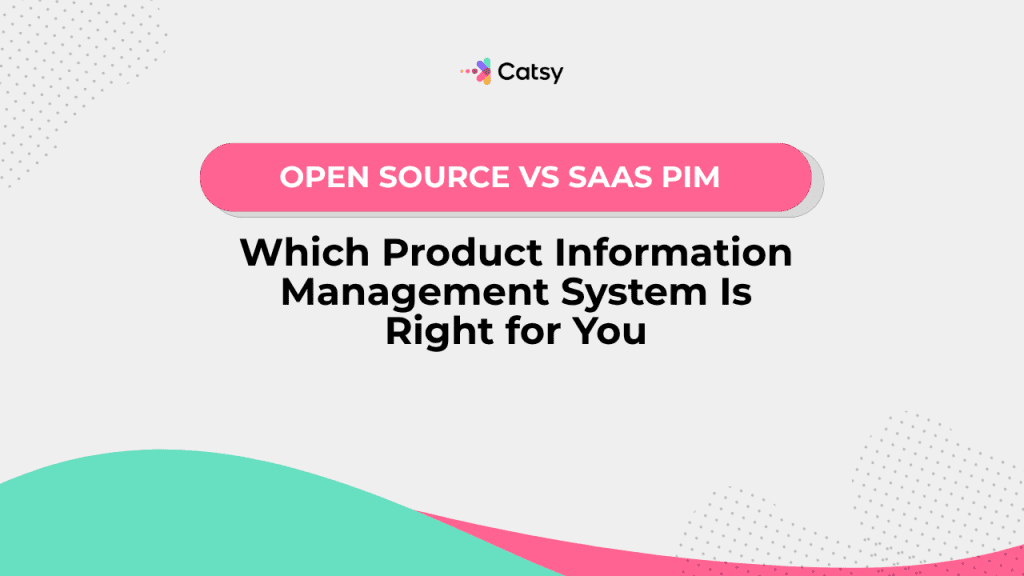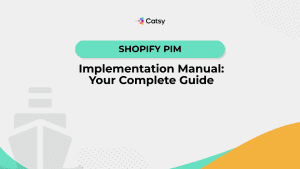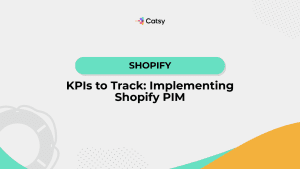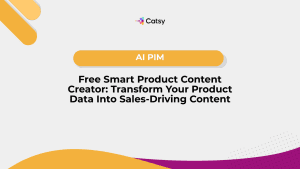What Are Consumer Packaged Goods (CPG) Brands? Definition and Examples
What are some of the items you use in your daily routine? For most people those are their favorite morning coffee, toothpaste, snack or laundry detergent. They are easy to recognize as most people use them. From toothpaste to potato chips, CPG items are essentials that sell quickly as we need to restock them frequently.
Think about your morning routine. You probably reach for a toothbrush, and some toothpaste, and maybe pour cereal into a bowl. Everything you just used? Those are all CPG products. CPGs are the everyday essentials that make up the rhythm of our lives. We buy them, use them, and repeat, that’s what makes this industry such a powerhouse.

Defining CPG Brands
A CPG brand is a company that makes and sells these products, often aiming to become your go-to choice. These brands thrive on familiarity, trust, and accessibility. The more often you recognize and reach for their product, the stronger their brand.
Most people have specific preferences when it comes to products they use and trust daily, especially if those are the products that the whole family is using. Brand that you immediately go to find on a store shelf is a successful CPG brand. There is a good reason why you reach for them first. You always reach for them first, as their products bring good value for the money and that’s why they’ve earned your trust over time. Slowly they made themselves a household must have.
CPG brands build strong connections with consumers through recognizable names, consistent quality, and mass availability.
In this Article
What Sets CPG Brands Apart?
Did you ever think what is so special about a brand that it becomes a CPG? One of the reasons might be that they’ve mastered the art of being everywhere. They are making you feel like their product is the best choice, even if the shelf is packed with other great options.
Here’s how they stand out:
- Brand Recognition: We’re more likely to buy what we know. CPG brands work hard to stay familiar.
- Marketing Muscle: From commercials to Instagram ads, they’re constantly promoting to stay top of mind.
- Ubiquitous Distribution: These are the brands that you will see literally everywhere. They are not only on the shelves of big supermarkets but also in gas stations, convenient stores, and online.
Let’s say that you run out of shampoo. You head to the store, and even though there are dozens of options, you go for Head & Shoulders. You choose that brand because you’ve seen it all over the other stores and ads, you personally used it and find it good for your hair, and after continuous use you now build trust that their shampoo will be good each time you purchase them.
It’s not just enough to have a good product. CPG brands thrive by being visible, trustworthy, and accessible no matter where you are shopping.
Key Characteristics of CPG Products
What exactly makes a product a CPG item? Let’s break it down:
- High Turnover Rate: People buy them frequently, think weekly grocery runs.
- Low Margin, High Volume: They don’t make a lot of money per item, but they sell millions.
- Fierce Shelf Competition: Dozens of similar products are fighting for your attention in-store and online.
- Packaging Matters: A good package can make all the difference in getting noticed and bought.
Toothpaste. You use it daily, run out, and need more. The brand that grabs your attention, maybe because of the packaging or a recent ad, is the one that wins your next purchase.
CPG products are the unsung heroes of daily life. They move fast, compete hard, and rely on brand, packaging, and shelf presence to succeed.
Make Catsy DAM and PIM Software an Extension of Your Team
Book a Free DemoExamples of Top CPG Brands
Chances are, your home is filled with products from some of these major players:
- Snacks and Beverages: Coca-Cola, PepsiCo, Nestlé, Mondelez
- Toiletries and Hygiene: Procter & Gamble (P&G), Unilever, Colgate-Palmolive
- Cleaning Supplies: Clorox, Lysol, Tide (by P&G)
- Baby and Healthcare: Johnson & Johnson, Kimberly-Clark (Huggies)
- Cosmetics: L’Oréal, Estée Lauder, Neutrogena
- Packaged Foods: Kraft Heinz, Campbell’s, General Mills
If your bathroom has a bottle of Dove body lotion, a Colgate toothpaste, and a Neutrogena cleanser, then you’ve got some of the biggest CPG brands in the world on your shelf.
The biggest CPG brands are household names for a reason. They are the brands you know you can count on. Those brands earned our trust by proving to us everytime how good they are.
Overview of the CPG Industry
As you can probably tell, the CPG industry is enormous, and it’s everywhere we look. The more you think about it the more brands that you can’t imagine your daily routine you will find in your household. From the products in your kitchen to the ones in your travel bag. They include giants with dozens of brands under their umbrella that build their name for decades.
But we can also see more and more startups trying to disrupt the market with fresh ideas.
The fact that you can find your favorite chocolate bar at a gas station, but also in every supermarket, or online store shows just how far-reaching this industry is. This is a high-stakes, fast-moving industry that affects nearly every consumer on the planet.
Challenges Facing the CPG Industry
Even with its massive size, the CPG industry faces some tough challenges:
- Fierce Competition: Store-brand and niche products often come in cheaper and just as good. This makes customers choose products based on the price and not on the brand name.
- Changing Preferences: Shoppers want transparency, eco-friendliness, and tailored experiences. CPG brands that have been in the business for decades now need to shift their business models.
- Supply Chain Issues: Getting products everywhere on time is harder than it looks. With so many transport complications, it can be hard to supply each store with the appropriate amount of products. That is especially hard during big holidays when the demand is higher.
- Digital Shelf Presence: Winning online means having complete, correct, and compelling product listings. Brands need to have optimized stores that allow customers to easily shop their products.
You might stop buying your usual chips because a new brand is cheaper and has better ingredients. That’s the kind of pressure traditional CPG brands face daily and try to find ways to solve that problem. To stay ahead, CPG companies need to listen to consumers, stay nimble, and innovate constantly.
The Rise of CPG Ecommerce
Buying groceries or toiletries used to mean a trip to the nearest store. Now, it often means a few clicks on your phone. Ecommerce has become essential for CPG brands to reach customers where they are, on their screens.
Think of how easy it is to reorder your favorite coffee pods on Amazon with a single tap. That’s ecommerce working its magic for a CPG brand.
More and more people use the convenience of online shopping where they might be influenced to try different products. Brands need to realize that online shopping is rapidly evolving and they need to stay up to date with new changes. It’s critical for CPG brands that want to grow and keep up with consumer expectations to focus on how they can improve their ecommerce strategy.
How PIM Supports CPG Brands
To get a brand to become a CPG brand it needs to have an organized and well planned strategy. A Product Information Management (PIM) system helps brands keep their product details organized. It makes it efficient and accurate across all platforms. That includes product names, sizes, descriptions, images all in one place and up to date.
You search for shampoo online and find the correct ingredients list, product image, and size on every retailer’s site. That’s likely thanks to a solid PIM system.
Think of the PIM as the behind-the-scenes tool that keeps product info consistent. It makes your brand look professional, and ready to go wherever customers are shopping.
First off, show off your media coverage and influencer shoutouts. Been featured in a magazine? Had a TikTok go viral? Maybe a skincare influencer gave your product a glowing review? Don’t be shy, flex that! Amazon loves seeing that your brand already has buzz and trust.
Next, share your wins on other platforms. Are you already selling on Target, Walmart, or another major retailer? That’s huge! It shows that you’re retail-ready and know how to play in bigger markets. Mention it loud and proud.
Keep those Amazon Seller ratings high. If you’re still selling through Seller Central, this is super important. Great reviews, on-time shipping, and happy customers, it all builds trust. Think of it like your report card for Amazon to see how reliable you are.
Be active in your category’s community. Whether that’s joining Facebook groups, attending industry events, or engaging on Reddit, just show that you’re involved. It helps position you as a leader, not just another brand.
And finally, stay consistent with your marketing. Whether it’s posting regularly on social media, keeping your branding on point, or running ads, just keep showing up. A strong, steady presence tells Amazon you’re in this for the long haul.
So yeah, polish up your public presence, brag a little (you’ve earned it), and let Amazon see why you’re worth the invite. What do you think, ready to stand out?
How DAM Helps Manage Brand Assets
A Digital Asset Management (DAM) system is like a well-organized photo album for your brand. It stores everything from product images and videos to instruction manuals and labels.
When a brand launches a new product, it needs to update the product photos, instruction leaflets, and promotional banners across all platforms. DAM makes it easy to pull the correct file, fast.
DAM systems streamline the way teams find, share, and publish brand content. It keeps everything consistent and saves a ton of time.
Emerging Trends in Consumer Packaged Goods
To stay relevant, CPG brands have to pay attention to what consumers care about right now:
- Sustainable Packaging: Less plastic and waste, more compostable and recyclable materials. More and more customers refuse to buy from brands that are not sustainable and don’t care for the environment.
- Health & Wellness: Fewer additives, and more natural and organic options. With more focus on healthy lifestyle, more customers pay attention to ingredient list.
- Personalization: Artificial intelligence driven recommendations and products tailored to each customer. No more general product advertising.
- Direct-to-Consumer (DTC): With online shopping platforms brands now have a chance to build relationships directly with buyers.
You buy a customized skincare set based on your quiz answers, that’s personalization. Or you subscribe to eco-friendly toilet paper that comes in recyclable packaging, that’s sustainability and DTC in action.
CPG brands that embrace what modern consumers care about, like health, convenience, and sustainability, are the ones that will thrive.
The Role of Packaging in CPG Branding
In the CPG world, packaging isn’t just a container, it’s a marketing tool, a first impression, and often, a deciding factor in whether or not someone buys your product.
You’re walking through a store and a product catches your eye because of its bold, clean design. You pick it up, even if you’ve never heard of the brand before. That’s the power of good packaging.
Thoughtful, eye-catching, and functional packaging not only protects the product, it also drives sales and builds brand recognition.
How Catsy Empowers CPG Brands
Catsy offers a combined PIM and DAM solution specifically designed to help CPG brands manage everything from product info to digital assets. It helps teams stay organized, ensure consistency, and publish product content faster across every channel.
A brand using Catsy can update all product listings, images, and labels across Walmart, Amazon, and their website in just a few clicks, without sending a dozen emails or chasing down files.
Catsy takes the challenge out of managing product content from your back. With the help of Catsy your CPG brands can focus on creating great products and building lasting customer relationships.
Want more tips, tutorials, and insights on product content and e-commerce operations?
Stay connected. We post regularly to help brands like yours scale smarter.
Are You Ready To streamline your product content management?
Continue Reading

Frequently Asked Questions
CPG stands for Consumer Packaged Goods. Those are products people use daily and need to restock regularly. Think of things like snacks, toiletries, and household cleaners. These goods are typically low-cost, come in convenient packaging, and are sold at high volumes.
Common examples of CPG products include toothpaste, shampoo, bottled water, cereal, and laundry detergent. If you use it regularly and replace it often, it’s probably a CPG product.
CPG brands build loyalty by being consistent, visible, and reliable. Familiar packaging, strong marketing, and widespread availability help consumers develop trust and stick with the brand over time.
Today’s CPG companies struggle with intense competition, shifting consumer values (like sustainability), supply chain disruptions, and staying visible in the digital marketplace. Keeping up with fast-changing trends is crucial to staying relevant.
Ecommerce lets CPG brands reach consumers where they shop most, online. From Amazon to brand websites, having accurate, compelling listings helps products stand out in a crowded digital space.
Tools like Product Information Management (PIM) and Digital Asset Management (DAM) systems help brands keep product data and visual assets organized and consistent across every sales channel, saving time and improving customer experience.
Packaging is often the first impression a product makes on a shopper. Great packaging attracts attention, communicates brand values, and can even sway buying decisions, especially in stores or while scrolling online.
Subscribe For More Content
Sign up for monthly tips on how to drive revenue with product content.




